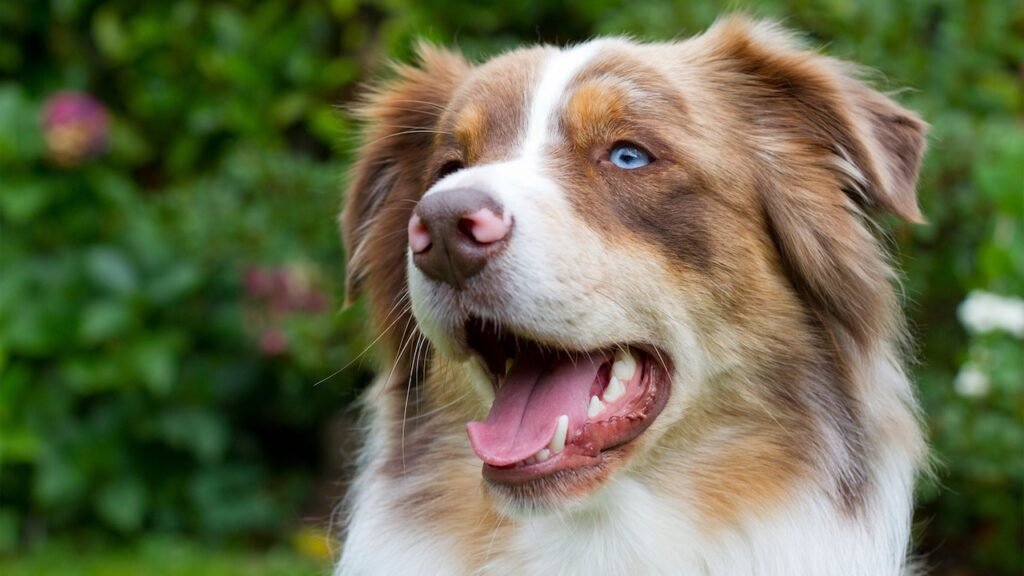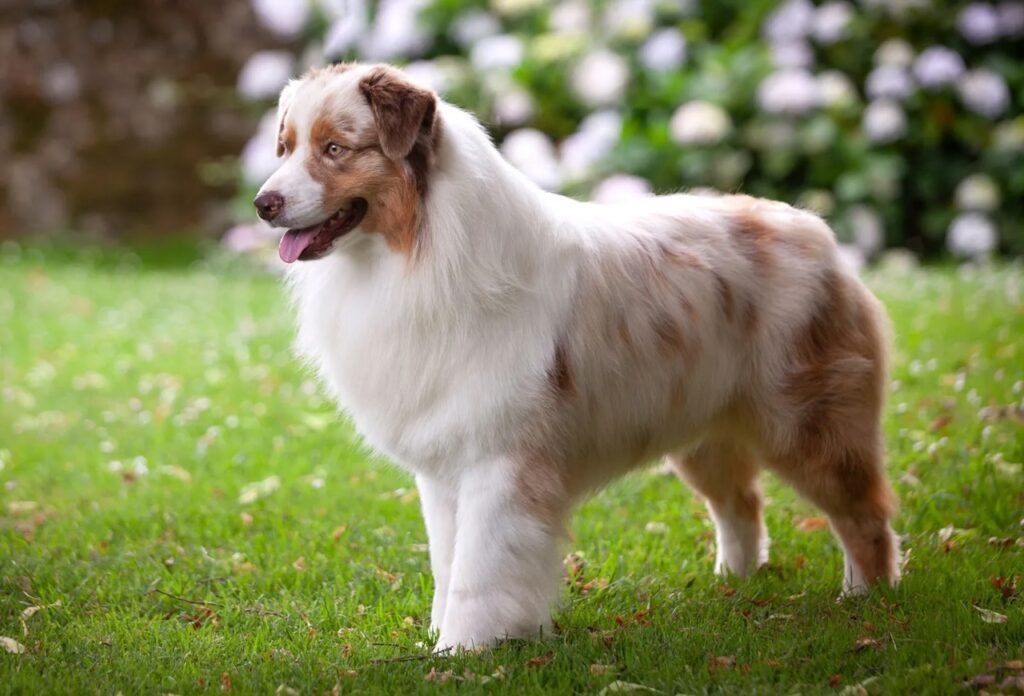The Australian Shepherd, often called “Aussie,” is a highly intelligent, energetic, and versatile herding breed celebrated globally for its striking looks and loyal temperament. This article covers every detail about the breed, from its fascinating history to its life cycle, controversies, and recent news.
Introduction
The Australian Shepherd is a medium-sized breed renowned for its agility, intelligence, and lively disposition, making it an ideal companion for active families and a favoured choice among ranchers and dog sports enthusiasts. Despite its name, the breed was actually developed in the United States, not Australia, with roots that trace back to herding dogs brought over from Spain and collies imported alongside sheep from Australia and New Zealand.
Breed Origin and History
Contrary to its title, the Australian Shepherd’s lineage is distinctly American, emerging in California during the 19th century. Early ancestors included Spanish sheepdogs, Basque Shepherd Dogs, and Pyrenean Sheepdogs, whose unique genetic traits, particularly the merle coat and striking eyes, persist in today’s Aussies.
- The breed’s popularity exploded after World War II, appearing in rodeos, horse shows, and even films.
- Official recognition came in 1979 with the United Kennel Club, and the American Kennel Club acknowledged the breed in the 1990s.
- Australian Shepherds quickly became sought-after working and companion dogs across North America and beyond.
Pros and Cons Table
Life Cycle and Development Stages
Australian Shepherds experience a well-defined life cycle, marked by rapid growth, remarkable energy, and enduring loyalty.
Puppy Stage
- Birth to 6 months: Puppies grow swiftly, shedding baby teeth and forming lasting bonds with family.
- Socialisation and training should begin early for the best results.
Adolescent Stage
- 6 months to 1 year: The energetic adolescent enters sexual maturity; females may experience their first heat cycle, and males become capable of reproduction.
- Consistent training helps shape behaviour.
Adult Stage
- 1 to 9 years: The dog reaches peak strength and intelligence, though many Aussies maintain playful puppy-like behaviour for years.
- Continued stimulation, exercise, and proper nutrition are vital.
Senior Stage
- From 9 years onward: Slowing down, seniors may require modified diets and gentler activity. Life expectancy typically falls between 12 and 15 years, though some live up to 18 years with outstanding care.
- Routine vet visits and senior diets help maintain quality of life.
Physical Characteristics
The Australian Shepherd is easily recognisable for its medium build, beautiful coat, and expressive eyes.
- Height: Males stand 20-23 inches; females 18-21 inches.
- Weight: Males weigh 50-65 pounds; females 40-55 pounds.
- Coat: Ranges from blue merle, black, red merle to red; moderate length and density.
- Eyes: Strikingly varied, often blue, amber, or heterochromatic.
Regular grooming is essential, as Aussies shed year-round.
Temperament and Behaviour
Australian Shepherds are smart, trainable, and exceptionally loyal. Their herding instincts make them playful and responsive, but their high energy levels require ample daily stimulation.
- Reserved around strangers but affectionate with family.
- Thrive in active environments; may develop behavioral issues if under-stimulated.
- Quick learners, excel in obedience, agility, and even therapy work.
Health, Diet, and Lifespan
Aussies are generally healthy, thriving with regular care and active lifestyles.
- Lifespan: 12–15 years; some reach 18.
- Common health concerns: Hip dysplasia, epilepsy, cataracts.
- Diet: High-quality, protein-rich dog food supports energy needs; seniors require modified diets to prevent obesity.
- Vet Care: Preventative checkups, vaccinations, and dental hygiene are critical.
Spaying/neutering is often recommended before 2 years of age to reduce certain health risks, though opinions vary, and decisions should be individualized.
Breed Controversies
Tail Docking
Tail docking remains an ethical and health controversy in Australian Shepherd breeding.

- Historically, tails were docked to prevent injury and uphold tradition, particularly among ranchers.
- The American Veterinary Medical Association opposes docking solely for cosmetic or historical reasons, advocating that it provides no health benefit and risks pain and neuroma formation.
- Breed standards still require docking in some circles; however, a growing movement supports undocked or “natural bobtail” Aussies.
Rescue, Adoption, and Overbreeding Issues
Recent news has highlighted issues of overbreeding and neglect, particularly with the rise of “toy” Australian Shepherds.
- In August 2025, 33 Toy Australian Shepherds were surrendered in Oregon due to neglect, sparking renewed adoption and rescue efforts.
- Shelters have urged responsible adoption, as breeding for size and novelty sometimes leads to welfare concerns and poor socialisation.
Recent News and Trends
The Australian Shepherd breed continues to capture headlines in 2025:
- Viral reunions: Aussies have recently become the subject of trending social media posts, including heartwarming reunions of siblings at dog parks, showcasing their keen intelligence and ability to recognise family.
- Animal welfare: Increased attention on rescue cases has prompted advocacy for ethical breeding and public education on responsible ownership.
- Adoption increases: Shelters have witnessed a surge in adoptions, reflecting the breed’s enduring popularity and the public’s desire to support responsible breeding.
FAQs About Australian Shepherds
Where did the Australian Shepherd originate?
The breed was developed in California, USA, in the 19th century, with roots from Spanish, Australian, and New Zealand herding dogs.
What is the average lifespan of an Australian Shepherd?
Most live between 12 and 15 years, with some reaching 18 years with great care.
Are Australian Shepherds good family dogs?
Yes, Aussies are affectionate, loyal, and thrive with active families willing to provide stimulation and training.
What are common health issues for the breed?
Hip dysplasia, epilepsy, cataracts, and obesity in seniors are notable concerns.
Why is tail docking controversial?
Tail docking for cosmetic reasons is deemed unnecessary and painful by major veterinary organisations. Increasingly, undocked Aussies are preferred by many breeders.
How much exercise does an Aussie need?
Australian Shepherds require 1–2 hours of vigorous exercise daily, including walks, playtime, and mental stimulation.
Are Mini and Toy Aussies different from Standard Aussies?
Mini and Toy Aussies are bred for a smaller size but possess similar temperament and lifespan. Overbreeding for novelty can lead to health and welfare issues; responsible adoption is encouraged.
What are the breed’s grooming needs?
Australian Shepherds shed continuously; regular brushing is vital to manage shedding and keep their coat healthy.
Do Australian Shepherds get along with other pets?
Most Aussies are sociable with other animals when properly socialised, though strong herding instincts may emerge.
Are Aussies prone to behavioural problems?
Without consistent training and exercise, Aussies may become bored, anxious, or destructive. Early, positive training is essential.










